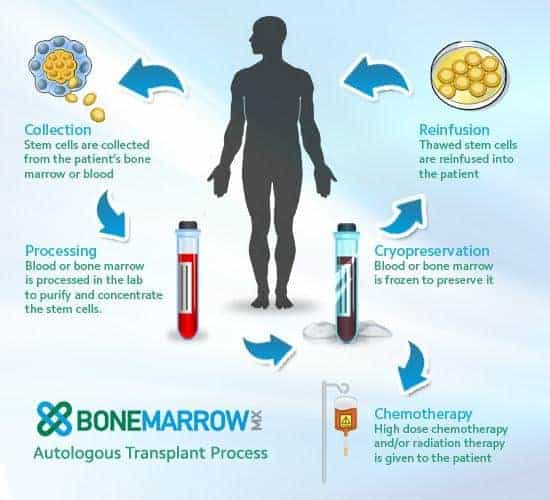Pe tărâmul biotehnologiei, Viitorul are o promisiune imensă pentru prelungirea duratei de viață a omului prin dezvoltarea și utilizarea organelor cultivate laborator. Convergența tehnologiei de ultimă oră, Cercetare inovatoare, iar potențialul nelimitat al celulelor stem a deschis calea pentru o abordare revoluționară a transplantului de organe și a extinderii vieții. Biotechnology centers around the world are at the forefront of this groundbreaking movement, envisioning a future where individuals can potentially live up to 150 years or more through the use of autologous transplantation and regenerative medicine.

The Rise of Lab-Grown Organs
Stem Cell Technology
Celule stem, with their remarkable ability to differentiate into various cell types, serve as the cornerstone of lab-grown organ development. These versatile cells can be coaxed into becoming specific tissues and organs, offering a renewable source for creating customized replacement organs tailored to individual patients. Biotechnology centers leverage the regenerative potential of stem cells to cultivate functional organs in a controlled laboratory environment, sidestepping the limitations of traditional organ donation and transplantation.

Transplant autolog
One of the key advantages of lab-grown organs is the concept of autologous transplantation, where organs are grown using the patient’s own cells. This personalized approach minimizes the risk of rejection and eliminates the need for immunosuppressive drugs, leading to better outcomes and improved long-term viability. Biotechnology centers are pioneering techniques to harvest, culture, and engineer patient-specific cells into fully functional organs that seamlessly integrate with the recipient’s body, offering a new horizon in personalized medicine.

A 150-Year Lifespan Vision

Life Extension Through Regenerative Medicine
The prospect of extending human lifespan to 150 years or beyond is no longer confined to science fiction. With advancements in regenerative medicine and organ regeneration, biotechnology centers are envisioning a future where age-related organ degeneration can be reversed or prevented through the replacement of damaged tissues with lab-grown organs. By harnessing the power of stem cells and tissue engineering, researchers are striving to redefine the boundaries of human longevity and enhance quality of life for generations to come.
Integrated Health Solutions
In the pursuit of a 150-year lifespan vision, biotechnology centers are not only focusing on organ replacement but also on holistic health solutions that address the underlying factors contributing to aging and disease. By combining regenerative therapies with personalized medicine, nutritional interventions, and lifestyle modifications, these centers aim to optimize healthspan and vitality, allowing individuals to not only live longer but also live better. The integration of cutting-edge technologies such as artificial intelligence, genomics, and nanotechnology further enhances the precision and effectiveness of these health interventions, paving the way for a future where age-related ailments are a relic of the past.
The Role of Biotech Investors and Longevity Researchers
Investing in the Future of Healthcare
Pentru investitorii biotehnologici, the burgeoning field of lab-grown organs and regenerative medicine presents a lucrative opportunity to drive innovation and shape the future of healthcare. By supporting research initiatives, Studii clinice, and commercialization efforts in the biotechnology sector, investors play a pivotal role in accelerating the development and adoption of life-extending technologies. The potential market for lab-grown organs and regenerative therapies is vast, with the promise of transforming healthcare delivery, enhancing patient outcomes, and revolutionizing the treatment of chronic diseases.
Collaboration and Knowledge Exchange
Longevity researchers, bioengineers, and medical professionals are at the forefront of advancing the field of regenerative medicine and organ transplantation. Through interdisciplinary collaboration and knowledge exchange, these experts collectively drive progress in developing novel therapies, refining surgical techniques, and optimizing patient care pathways. Biotechnology centers serve as hubs of innovation and collaboration, fostering a dynamic ecosystem where ideas are shared, research is accelerated, and breakthroughs are achieved. By harnessing the collective expertise and creativity of diverse stakeholders, the vision of a 150-year lifespan becomes not just a possibility but a tangible reality on the horizon.
Concluzie
As we stand on the cusp of a new era in healthcare and longevity, the role of biotechnology centers in shaping a 150-year lifespan future cannot be overstated. Through the convergence of stem cell technology, Medicină regenerativă, and personalized healthcare solutions, these centers are driving transformative change in the field of organ transplantation and life extension. The vision of growing organs in the lab, enhancing human longevity, and redefining the limits of aging holds immense promise for individuals seeking to optimize their health and well-being. With a collaborative spirit, unwavering dedication to innovation, and a commitment to excellence, biotechnology centers are paving the way for a future where the boundaries of human lifespan are extended, and the possibilities of regenerative medicine are boundless.
Explore how biotechnology centers are shaping a 150-year lifespan future and join the journey towards a healthier, longer, and more vibrant life.

